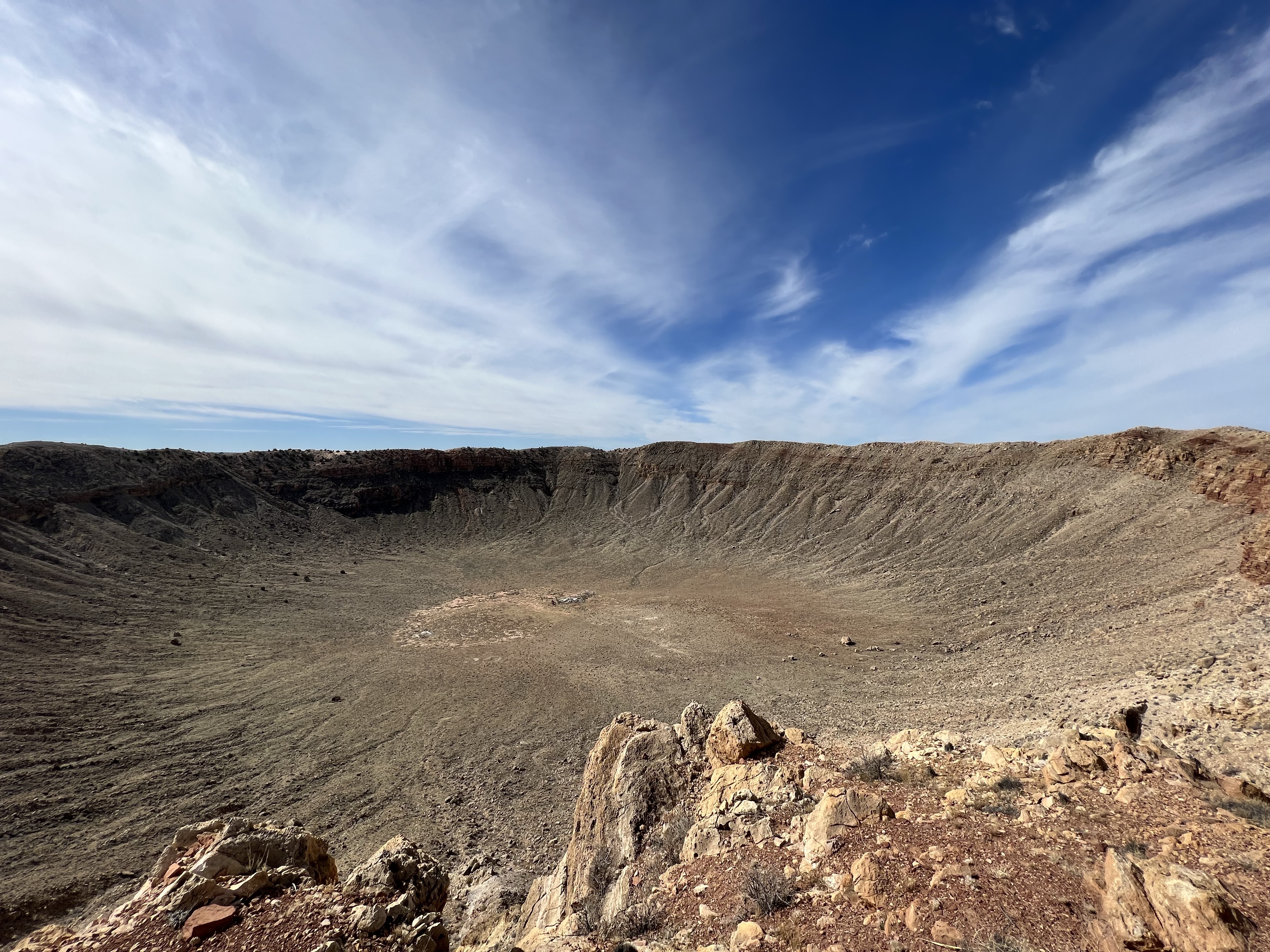High on my sketch list is a landform 30 miles east on Highway 40 from Flagstaff, Arizona. This is, as writer Bill Bryson says, “the most famous impact site on Earth and a popular tourist attraction”. It is known simply as Meteor Crater.
I left my digs in West Sedona at a quarter to eight for the 90 minute journey to the big depression in the middle of nowhere.
As I headed up Highway 17, from Sedona at 4,350 feet to Flagstaff, at 7,000 feet, the temperature dropped. As I neared Flagstaff the temps hovered just above freezing. This journey was the reason I packed my puffy jacket, gloves, and beanie. It was cold up here with plenty of snow and ice on the ground.
I grazed the outskirts of Flagstaff and then turned east on Highway 40 toward Winslow and New Mexico. Within half an hour I turned south, towards the Meteor Crater.

Once at the crater I had to find the crater through a maze of admissions, stairs, a gift shop, two theaters, a museum, more stairs, and a corridor or two. But finally I found the observation deck on the rim of the 4,000 foot in diameter crater. It was breathtaking (or maybe just out of breath with all the exertion finding the crater).

What caused this massive 560 foot deep crater? Well scientists surmise that about 50,000 years ago in the Pleistocene Epoch, the Earth was struck by a meteor traveling at about 26,000 miles an hour! The iron-nickel meteorite was about 150 feet wide and weighed several thousand tons. The impact generated a force greater than 20 million tons of TNT. That’s 20,000 kilotons. As a comparison, the atomic bomb dropped on Hiroshima was about 15 kilotons of TNT. Most of the meteorite vaporized during the impact, but a few pieces of the meteor have been recovered.

At the museum it is noted on the crater’s vastness and size: “The Crater is large enough for 20 football games to be played simultaneously on its floor, while more than 2 million people could watch from the side slopes.” If there were sporting events occurring in the crater, you would need some good optics to see what was happening down below. And I found some:

Reading about the crater in Bill Bryson’s excellent book, “A Short History of Nearly Everything” was the impetus for my Spring Break Arizona trip and it rekindled my interest in Astronomy.

